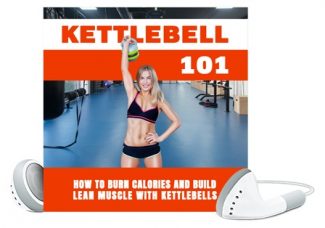 License Type: Master Resell Rights
License Type: Master Resell Rights  File Type: ZIP
File Type: ZIP
 SKU: 64719
SKU: 64719  Shipping: Online Download
Shipping: Online Download
Sample Content Preview
Building Incredible Functional Strength and Ultimate Health With Kettlebells
Hey, have you heard about kettlebell training?
Likely you’ve seen them cropping up at your local gym and possibly you’ll have seen a few YouTube videos on the subject. After all, kettlebells have very quickly become the latest massive trend for building functional strength and have grown massively in popularity over recent years.
What you might not realise though is just how fantastic kettlebells are for building functional strength, burning calories and greatly improving all-round health. Moreover, you might not have realised just what kettlebells represent. Specifically, kettlebells represent a move to an entirely new type of training and an entirely new philosophy surrounding it.
To be frank, right now your fitness routine is probably woefully insufficient. If you followed conventional fitness and training wisdom and combined that with a conventional lifestyle, then you may be doing untold damage to not only your body but also your brain. That is not to say that you have been misled, simply that we are discovering new information all the time and that this is constantly shifting paradigms with regards to the best forms of training.
This guide will explain everything in detail and introduce the solution: the kettlebell.
Why Your Current Training and Fitness Routine is Not Enough
Consider for a moment the circumstances that led to our evolution and to our current state of being. Put simply, humans have thrived because we are able to adapt very well to our environment. To that end, we have a nervous system and musculature that is inherently plastic and able to change, warp and adapt as
the situation demands. We grow new neuronal connections, we develop specific muscles and others atrophy all at the same time.
And our brains and bodies love to adapt in these ways. When we learn new movements and when we challenge our bodies in new ways, it triggers the release of reward chemicals – endorphins and dopamine
– which help to reinforce and cement the specific sequence of movements and thoughts that led to that effective movement. This triggers the formation of new connections and that in turn is what keeps the brain youthful, adaptive and learning.
In turn, this makes it easier for us to learn other new things and keeps our brain dynamic and growing. This has been shown to be highly protective against age-related cognitive decline and more serious cases of dementia and Alzheimer’s. In short, if you don’t use it, you lose it.
Meanwhile, complex and challenging movement is what allows us to train all of our supporting muscles, our proprioception, our balance and more. It’s what maintains our flexibility and it’s what gives us functional strength that can actually translate into useful power when we’re working and playing.
But this is not what most of us get from our current routines.
Instead, most of us will spend a good 8-10 hours of every day working in an office. When we’re not working in the office, we’re commuting to and from work.
All this time we are sitting. In the dark. While highly stressed.
When we’re not commuting in and out of work, we’re probably sitting at home in front of the TV.
Sitting is incredibly bad for your health. For starters, it takes years off of your life due to the considerable lack of activity which allows your heart atrophy.
Meanwhile, it causes serious changes to your musculature. Your hip flexors – the muscles that you use to curl your legs behind you – will become stretched and weakened. Meanwhile, your hip extensors – the muscles in your legs that you use for kicking – will become tightened and shortened as your knees are constantly as high as your waist. This creates an imbalance that results in more pressure being placed on one side of your pelvis than the other. This is what leads to an ‘anterior pelvic tilt’ where the pelvis leans forward forcing your buttocks outward and actually making you physically shorter! Of course this isn’t terribly good for your pelvis or your back either and can lead to pain and discomfort.
At the same time, being at the computer all day means that your neck is constantly craned upward, while your arms are stretched forward. This causes a similar tightness and shortness in the pectoral muscles while weakening and stretching your lats and traps. The result is that you end up with a hunch-back posture which once again isn’t particularly attractive or functional.
Again, it’s very simple really: you spend all day in a single position which causes your body to adapt to that position. Some muscles become tense and stiff while others weaken and atrophy. The complete lack of variety in your movement means you get practically frozen in that position and this isn’t even a movement that we would have naturally used in the wild!
So we go to the gym to fix all this. But if you’re like most people, your version of fixing this will involve lifting weights through a very static range of motion using ‘single joint’ movements. These include the likes of bicep curls, which challenge you to curl a weight while bending only your elbow and bench press which further strengthens your pecs.
These exercises do not train the muscles in any functional manner because it isolates them. In the real world, we would only ever train our muscles in unison – working together as one tool and incorporating lots of smaller supporting muscles to help us balance and to give us more support as we go through various motions.








